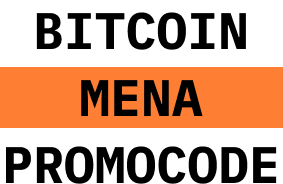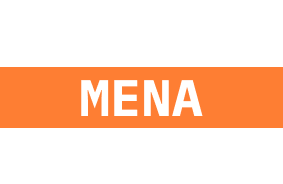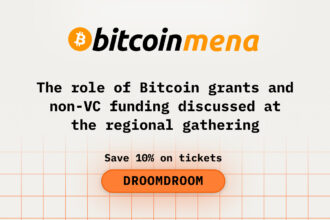If you plan to pitch investors during Bitcoin MENA Abu Dhabi 2025, a polished pitch deck can be the difference between booking follow-up vapor or being smoothly passed. This isn’t just about lip‑service—it’s a chance to crystallize your metrics, token design, roadmap, and ask into an impactful narrative. And if you haven’t reserved your spot yet:
- Understand What VC Intros at Crypto Conferences Mean
- Slide Structure That Speaks the Investor’s Language
- Visual Storytelling and Flow
- Highlight Blockchain Metrics—Traction Speaks Louder
- Building Credibility with Team and Governance
- Tokenomics, Ask & Financial Slides: Be Specific
- Rehearse for Impact & Backup Your Files
- Follow-Up Strategy: Continue the Conversation After the Pitch
- Conclusion
Understand What VC Intros at Crypto Conferences Mean
VC introductions at Bitcoin MENA are often short—think micro‑18 minutes on-panel or one‑shot meetups in expo corridors or virtual lounges. Investors expect founders to articulate the problem, traction, token model, team, and financing plan clearly and quickly. Evaluation criteria are stricter than for general startups: “What real pain are you solving?”, “How will token flow confine network activity?”, and “Is your model reversible or forking‑resistant?” Good Web3 decks anticipate these by foregrounding clarity and defensibility.
Slide Structure That Speaks the Investor’s Language
VCs spend just two to five minutes scanning decks before moving on (SVB Research recommends this format). Your deck should be relentless about clarity, not flamboyant. Follow a 12–14 slide sequence that answers investor questions before they’re asked: cover, problem, solution, traction, market, tokenomics, competition, team, financials, ask. Web3-specific slides should include token flow diagrams and usage metrics, but keep detail to a single slide (tokenomics) with clarity over chaos.
Visual Storytelling and Flow
Complex crypto concepts demand clear visuals. Replace long truckloads of bullet points with diagrams—consensus flow, smart contract orchestration, token utility cycles. Few slides should contain more than one chart or icon group. Typography should be sans-serif, no smaller than 28pt. Remember to test at smaller screen sizes or dim lighting. A clean, professional deck instills credibility and compels next questions, not just passive scrolling.
Highlight Blockchain Metrics—Traction Speaks Louder
Numbers that show product-market fit are more effective than empty predictions. Emphasize key metrics: monthly active wallets, on-chain transaction volume, TVL in each lane, node uptime, or swap transactions per hour. Use graphs with at most two trend lines and annotate key inflection points—like a tokenomics airdrop or a multi-post upgrade. Even in absence of revenue, protocol usage is a traction signal. VCs at crypto events prize precision over hype. And if you’re shaping your ask slide, frame it thus: “Seeking $1.2M to scale to 30k cumulative wallets, break-even by Q4 2026 on reduced network fees.”
Building Credibility with Team and Governance
Your deck’s team slide should chronicle not just experience but relevant blockchain credentials: prior roles as validators, protocol contributions, audit track records, aligned GitHub forks, or public recognition. Key members of your founding team should have a bullet‑line summary of their crypto relevance for the investor audience—especially important in the MENA region where founders are judged by global pedigree and regional execution capability alike.
Tokenomics, Ask & Financial Slides: Be Specific
- Tokenomics: Show mechanics, token caps, locking schedule, burn logic, usage model—use a diagram, not text.
- Financial projection: Two-forward year projections, go-to-market cost, team ramp, burn rate.
- Ask slide: Provide the amount requested, previous rounds, and proposed equity/stake. Complete framing: “We aim to raise $1.2M now and seek $4M Series A in Q3 2026 on $15M pre-money.”
Rehearse for Impact & Backup Your Files
Practice your pitch out loud until you can complete your slides in under 10 minutes—without fumbles or misreads. Investors may give you just five minutes or less. Record yourself to refine pacing. Avoid startup voice quivers; real confidence comes from repetition. Have multiple versions of your deck—PDF, Google Slides, and a one-page “read-after” summary. Keep your docs secure, backed up, and accessible offline in case Wi-Fi is spotty.
Follow-Up Strategy: Continue the Conversation After the Pitch
After your pitch, send a polished follow-up message within 24 hours referencing a specific point from your conversation—add updated traction numbers or a follow-up one-pager. Investors will remember if you solved a metric ambiguity or clarified a technical diagram post-meeting. This continuation often matters more than the intro itself.
Conclusion
At Bitcoin MENA, your pitch deck is more than presentation—it’s your first handshake, credibility badge, and investment narrative translated into slides. Focus on clarity, crypto-specific numbers, and emotional structure: every slide should build up to your ask with precision. Prioritize rehearsal and follow-through. And don’t forget: if you haven’t confirmed your ticket yet,

















